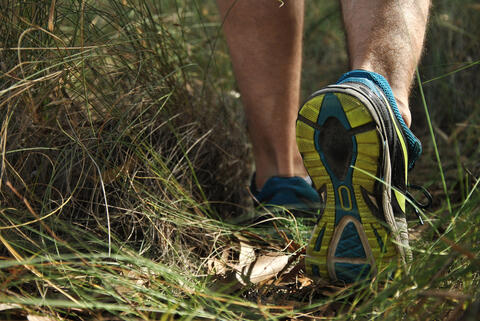About Babesiosis
Babesiosis is an illness spread by the deer tick, also known as the black-legged tick. Babesiosis is caused by a tiny parasite called Babesia. This parasite infects and destroys red blood cells.
Anyone can get babesiosis. Older adults, people without a spleen, and those who have a weakened immune system are at higher risk of severe illness.
People who spend more time outdoors are at higher risk of being bitten by an infected tick. Deer ticks are found in areas with woods, brush, or tall grass.
In Wisconsin, deer ticks are most active from May to November, but they can be active anytime temperatures are above 40°F.
Map description
The map to the right shows the annual average number of cases of babesiosis per 100,000 people by county.
More cases of babesiosis occur in the northern and western regions of the state.
The deer tick, which spreads babesiosis, is also more common in these regions.
Protect yourself with Tick Bite Prevention
Babesiosis 101
The Babesia parasite spreads to humans through the bite of an infected deer tick.
It is important to remove ticks as soon as you find them. A tick must be attached for at least 36–48 hours to spread the parasite to a person. Removing a tick right away helps prevent you from getting sick.
Most people are infected by immature ticks, called nymphs. Nymphs are most active during the spring and early summer. Nymphs are very small, about the size of a poppy seed. They’re hard to see, and most people don’t feel their bite. This makes them harder to remove right away.
Adult ticks also spread Babesia. Adult ticks are most active during the cooler months of spring and fall. Adults are larger than nymphs, about the size of a sesame seed. They’re more likely to be found and removed before the parasite spreads to the person.
Ticks can attach to any part of the body. They often are found in hard-to-see areas, such as:
- Behind the knees.
- In the armpits.
- On the scalp.
- In and around the ears.
- Inside the belly button.
- On the groin.
Although it is rare, a person also can get babesiosis from infected blood products used in transfusions. As of 2020, all blood donated from Wisconsin residents is screened for Babesia infection using a special test approved by the U.S. Food and Drug Administration. People who’ve ever been diagnosed with babesiosis or whose blood tests positive for Babesia after donation aren’t allowed to donate blood for a period of time, usually at least two years. This helps prevent the spread of babesiosis.
Babesiosis is preventable and treatable. Learn about Tick Bite Prevention and how to properly remove a tick if you’re bitten.
Some people who are infected with Babesia don’t have any symptoms. For people who do get sick, symptoms can show up one to four weeks after being bitten by an infected tick. Some people can have more severe symptoms. Those at higher risk of severe symptoms include:
- Older adults.
- People with weak immune systems.
- Those who don’t have a spleen.
- Those with other serious health conditions.
Common signs and symptoms include
- Flu-like symptoms (fever, chills, headache, body aches, loss of appetite, nausea, tiredness)
- Anemia (not having enough red blood cells)
- Low blood platelets (blood cannot clot properly)
- Jaundice (yellowing of the skin or whites of the eyes from liver complications)
- Spleen and liver enlargement
Severe symptoms
- Difficulty breathing
- Severe anemia
- Heart attack
- Kidney failure
- Liver disease
- Confusion
- Death
See a doctor right away if you have symptoms after being bitten by a tick.
If you don’t have symptoms, you likely don’t need any treatment.
The recommended treatments for babesiosis are different than the typically treatments for Lyme disease, anaplasmosis, and ehrlichiosis.
For babesiosis, a combination of antibiotics used with certain antiparasitic drugs work well in most patients. Severe cases may require a blood transfusion.
Resources from the Wisconsin Department of Health Services
- Symptoms, treatment, and prevention—Babesiosis Fact Sheet, P-42028
- Education on the risk of illnesses spread by ticks—Tickborne Diseases Risk in Wisconsin, P-01751 (PDF)
- Educational tri-fold card about ticks in Wisconsin, proper removal, and tick bite prevention—Tick Safety Guide, P-01434
- Fact sheet with simple steps to take—Protecting Your Family From Mosquitoes and Ticks, P-02080
Resources from the CDC (Centers for Disease Control and Prevention)
- Signs and symptoms, treatment, prevention, and more —About
Babesiosis (opens external link) - Preventing Ticks on Your
Pets (opens external link) - Fact sheet on tick bite prevention for hunters—It’s Open Season on Ticks
(PDF) (opens external link) - Plastic trail sign to remind hikers there are ticks in the area—Prevent Tick Bites
(PDF) (opens external link) . Order the sign from CDC Publications onDemand (opens external link) . - Fact sheet on steps to take after a tick bite—Tick Bite: What to Do
(PDF) (opens external link) . - Educational comic for kids—Don’t Let a Tick Make You Sick
(PDF) (opens external link) - Educational crossword for kids—Don’t Let a Tick Make You Sick
(PDF) (opens external link)
Partner resources
- Information from the University of Wisconsin-Madison Medical Entomology Laboratory—Wisconsin Ticks and Tick-borne
Diseases (opens external link) - Information on ticks found in the Midwest, surveillance resources, and tick biology and development from the Midwest Center of Excellence for Vector-Borne Diseases—
Ticks (opens external link)
Contact us
Questions about illnesses spread by ticks? We’re here to help.
Bureau of Communicable Diseases
Phone: 608-267-9003
Fax: 608-261-4976



